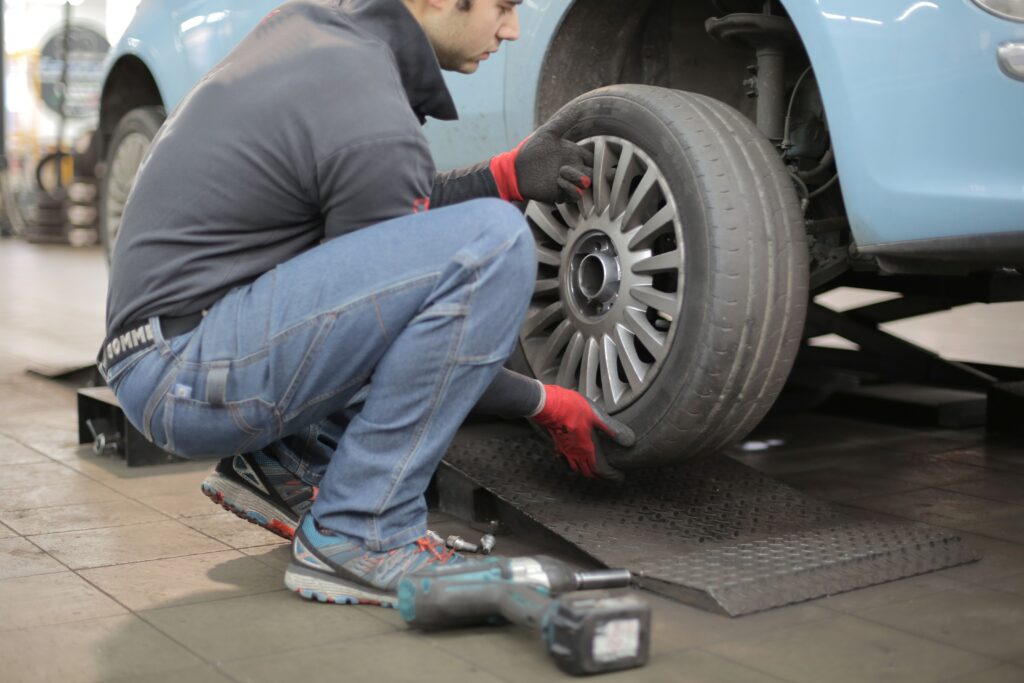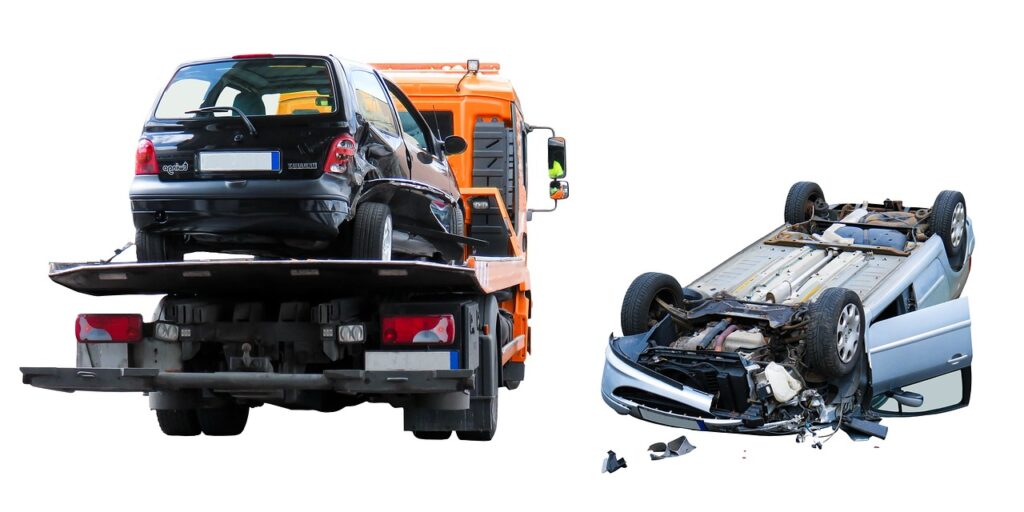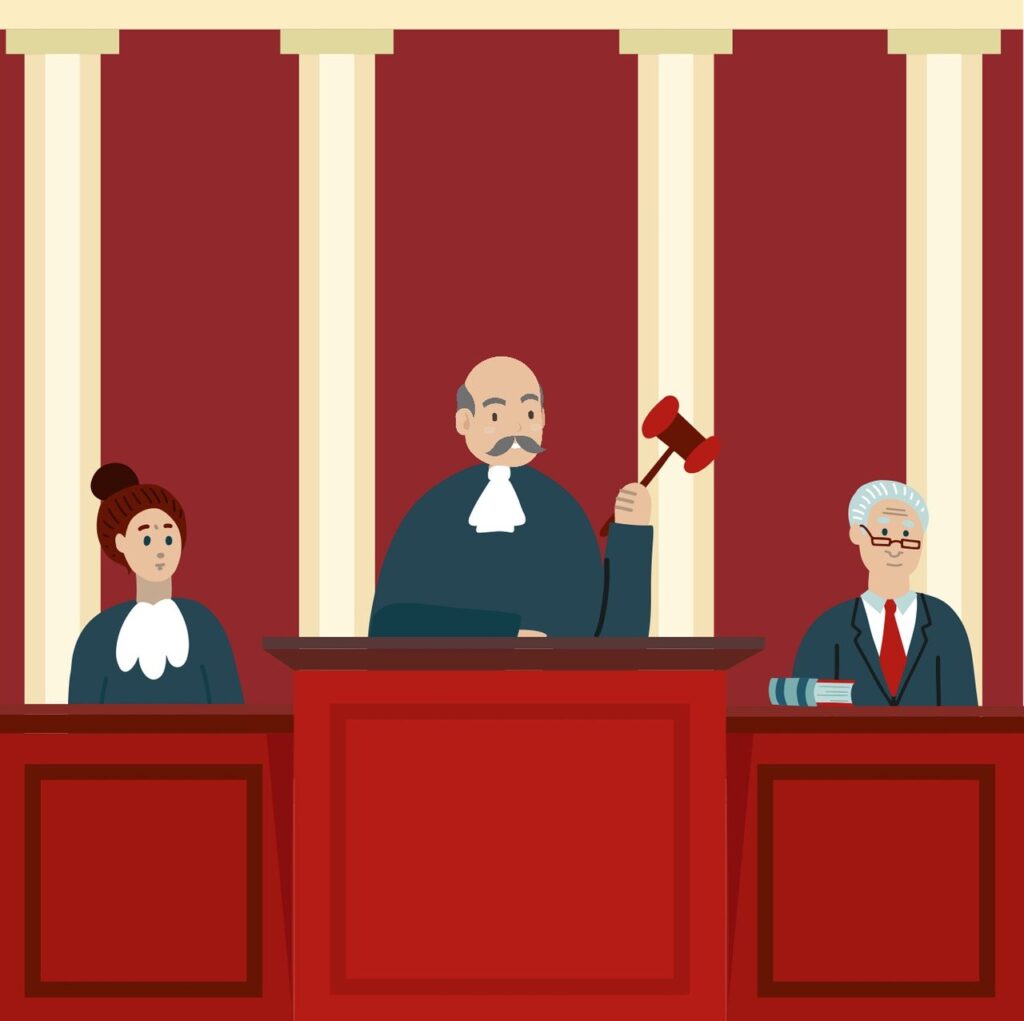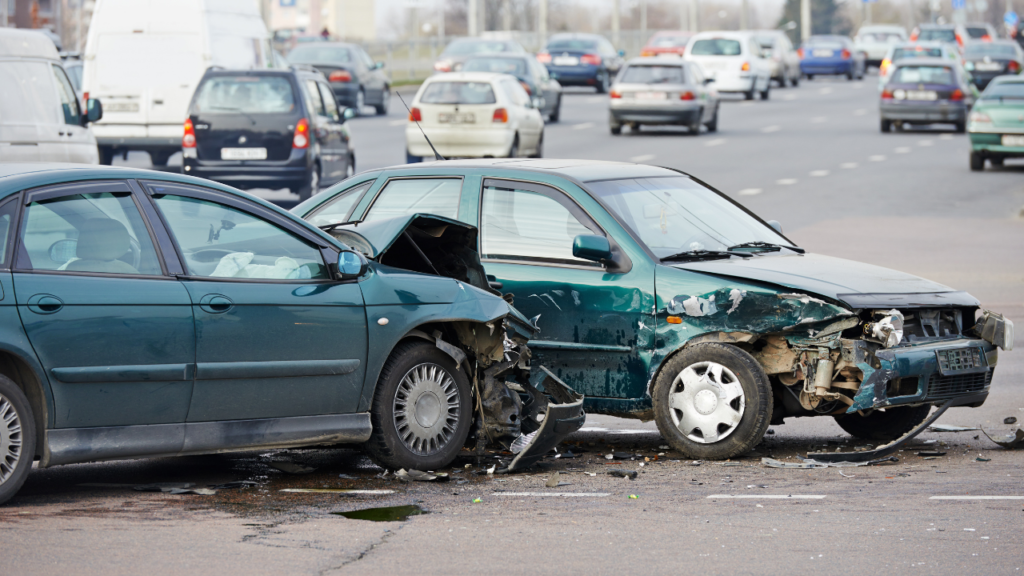leaving the scene of an accident resulting in property damage of more than $50
Leaving the scene of an accident is a criminal offense and highly punishable by law. In fact, you will be charged with a hit and run crime if you chose not to stop at the scene of an accident.
The charges for leaving the scene of an accident depend on the circumstances of the accident, the severity of the accident, laws in your area of jurisdiction, and your past criminal history.
Your charges will largely depend on whether it was a severe accident involving injuries/deaths, or it was a minor accident with only property damages that are worth certain $$.
You will be charged with a hit-and-run felony if you left the scene of an accident involving death and injuries. On the other hand misdemeanor hit-and-run charges will be slapped on you if the accident involved only property damages or minor injuries.
In short, Leaving the scene of an accident resulting in property damage over $50 can result in criminal charges, fines, license suspension, imprisonment, and civil liability.
Recommended reading: What evidence is needed to convict a hit and run? | car accident proofs
In this article, I will delve more into the penalties for leaving the scene of an accident resulting in property damage of more than $50, and also help you understand how best to defend yourself if you committed such a crime. Ready? let’s dive in.
Page Contents
What is a hit and run?
A hit and run is a crime you will have committed by leaving the scene of an accident where you failed the following legal obligations as far as auto accidents are concerned.
1. Share contact information. As far as auto accidents are concerned, all drivers should stop at the scene of an accident and share their contact information with those involved in the accident.
2. Share insurance information. The other driver(s) has a right to know more about your insurance company and your insurance policy numbers.
3. Report the crash. Drivers that are involved in an accident should not flee the scene of an accident. They should stay at the scene and invite the police to compile a police crash report.
Further reading: A car accident attorney guide to how to prove innocence in hit and run?
In some states, drivers are only obligated to report auto crashes that exceed a certain amount of money, for instance, damages that are worth above $50, or $500. Better find out what your state wants.
4. Render help. You must help casualties who were injured in the accident. You need to help transport them to the hospital or call 911.
Types of hit and run crimes
Were you involved in an accident and illegally left the scene of an accident? your criminal charge preceding will either be a hit-and-run felony or a misdemeanor hit and run.

1. Felony hit and run. You will face these charges if the accident involved deaths or bodily injuries.
2. Misdeamor hit and run. The driver that left the scene of an accident involving only property damages faces these charges. You will also still battle these charges if the accident involved no injuries or minor bodily injuries.
What is leaving the scene of an accident resulting in property damage of more than $50?
From what I already explained earlier in this article, leaving the scene of an accident resulting in property damage of more than $50 is a misdemeanor hit and run crime.
But what type of misdemeanor is it? is it class A, or is it class B or class C misdemeanors?
whether “leaving the scene of an accident resulting in property damages of more than $50” is class A, B, or C depends on the state you come from.
Further reading: The Role of a Car Accident Attorney in Maximizing Your Compensation-Dolan Law Firm.
“Note that some states such as Alabama, Alaska, Arizona, Arkansas, Colorado, Connecticut, Delaware, and Florida classify misdemeanors by levels or classes”, says Kelly, a car accident attorney.
“On the other hand, states like Georgia, Hawaii, Minnesota, New Jersey, and others use unique terms while referring to the severity of misdemeanors”, concludes Attorney Kelly.
Penalties for leaving the scene of an accident resulting in property damage of more than $50
The punishments for leaving the scene of an accident vary from state to state. What counts as a class B misdemeanor in one state could be a class A misdemeanor in another state.
For example, in one state you be charged with a class B if you left the scene of an accident resulting in property damage of more than $50, whereas in others your charge could still be a class C misdemeanor.
“For example, a class C misdemeanor charge in Texas is leaving the scene of an accident with property damages worth less than $200”, says Fitzpatrick, a traffic police officer in San Francisco.
Examples of property damage of more than $50
The following are examples of car parts that cost more than $50 in case you left the scene of an accident. If you caused such damages, expect a class B or A misdemeanor charge.
1. The Hood Of A Car. Replacing the hood of a car costs between $300-$1,500 and costs $300-$400 for painting plus at least $100 as labor costs.
2. The Bumper On A Car. “The cost of a new car Bumber is somewhere between $100-$,000. It also costs $300-$600 for painting”, says Akram a car mechanic.
3. Tail Lights. Depending on the severity of damages, you may be forced to pay between $200-$2,000 to restore/repair your car’s tail lights after accident damages.
4. Headlights On A Car. The cost to replace Headlights On A Car depends on the type of car and the body shop. On average, expect to pay between $20-$200 for each bulb, depending on the car that is damaged.
Penalties for leaving the scene of an accident
The penalties for leaving the scene of an accident depend on the circumstances of the hit and run accident, laws in your area of residence, and the outcomes of the accident.
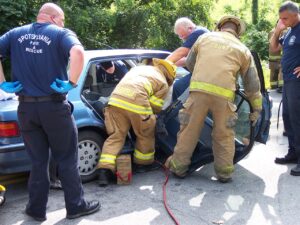
Irrespective of the above factors, expect the following consequences if you committed a hit and run by leaving the scene of an accident.
1. Criminal charges. These include jail time, prison time, fines, and suspension/revocation of your driver’s license.
2. Civil claims. If you caused the accident, be ready to compensate the victim that suffered injuries or losses due to your negligence.
3. Traffic tickets. You get a traffic ticket if you have a traffic violation like a DUI, speeding, texting while driving, and others.
Defenses against leaving the scene of an accident
You will soon defend yourself once you left the scene of an accident. You must defend yourself against hit and run charges.
To successfully defend yourself against leaving the scene of an accident, you must prove beyond doubt the following:
1. You were not the driver. You must prove that the driver in a car that committed hit and run was not you but someone else.
2. Car not yours. Sometimes you may be labeled the hit-and-run driver just because your car resembles the offenders.
3. You don’t know if the accident occurred. You may be one of the drivers, but maybe you are not aware that the crash happened.
For instance in single-car accidents, collisions between huge and small cars, one of the drivers may not have known that a collision took place, more especially in minor accidents.
4. Someone threatened you. It’s a common practice that some accident scenes are not a safe place to be. Your charges will be dropped or lessened if you can prove that the other driver(s) threatened your life.
5. Genuine reason for leaving. Maybe you left the scene of an accident just because you were attending to an emergency like a mother in labor.
6. Accident did not happen. Maybe someone committed insurance fraud and is attaching you to the accident scene.
Legal proceedings for leaving the scene of an accident
When it comes to the legal proceedings associated with leaving the scene of an accident resulting in property damage of more than $50, there are several key steps that are typically involved.
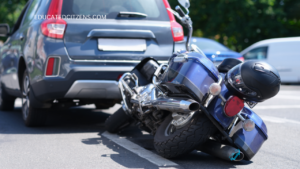
Here is a more detailed breakdown of the process:
1. The accident occurs. You must stop at the scene of an accident with property damages above or less than $50. You will be charged with a hit and run for failure to stop at the scene of an accident.
2. Investigation. Police will kick-start the investigation process once they are notified of the hit-and-run accident.
During hit and run investigation processes, the police will interview eyewitnesses, review surveillance footage, and gather evidence in relation to the hit-and-run accident.
3. Place charges. The driver will be summoned to appear in court or called to the place station if there is enough evidence to support the charges of leaving the scene of an accident resulting in property damages of more than $50.
4. Arraignment. Once charged, you have 2 options ie to plead guilty or not to plead guilty. You will need to defend yourself if you plead not guilty, or the judge/jury will sentence you once you plead guilty.
5. Trial. During trial, the prosecution will provide evidence against you, and in turn, you will defend yourself.
The prosecution will try to prove that you are the driver that left the scene of an accident and you were aware of the damages or injuries caused.
Must read: When Are Car Insurance Settlements Taxable?
You, or your hit-and-run driver will defend yourself by may be arguing that you were not aware of the accident or its damages, or you had a valid reason to leave the scene of an accident.
6. Sentencing. If the jury/judge finds you guilty, you will be sentenced in court. Your penalties will depend on the laws in the jurisdiction where the hit and run accident occurred.
Additionally, your sentence will also depend on other mitigating and aggravating factors present in your case. For instance, expect severe punishment if there were injuries/deaths. Expect harsh punishments too if it’s your subsequent offenses.
How to avoid leaving the scene of an accident?
“Just like any other good citizen, being on the good side of the law should be a priority for all of us, says Morgan, a car accident lawyer.
The following are ways how to avoid leaving the scene of accident punishments:
1. Stay at the scene. Irrespective of the severity of the accident, staying at the scene carries fewer consequences compared to committing a hit-and-run crime.
2. Exchange information. For crashes that resulted in no injuries or deaths, please, make sure you exchanged your contact information and insurance with the other driver before leaving the scene of an accident.
3. Be aware of the laws. As you have always been told, ignorance has no defense in courts of law. Familiarize yourself with basic traffic laws. It’s true some people leave the scene of an accident due to ignorance of the law.
Conclusion.
It’s a hit and run crime by leaving the scene of an accident resulting in property damage of more than $50.
Irrespective of damages, injuries, or deaths, I highly recommend staying at the scene of an accident. Leaving the scene puts you at risk of criminal charges, and civil claims.
You also don’t want to put the lives of fellow drivers at risk by leaving the scene of an accident. Stop at the scene and render help to the injured- save the life of others.
Source
- Criminal charges: Website: https://www.findlaw.com/criminal/criminal-charges/view-all-criminal-charges.html
- Legal information insitute: website: https://www.law.cornell.edu/wex/charge
- Criminal charge Definition. Website: https://www.lawinsider.com/dictionary/criminal-charge
